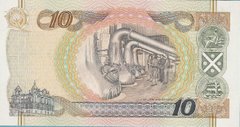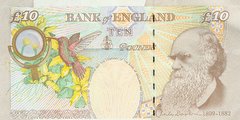
Mexico's greatest leader, Benito Juárez, was a Zapotec from Oaxaca. In fact, the city itself, capital of the state of Oaxaca, is known as Oaxaca de Juárez. In Mexico City, the international airport is known as Aeropuerto Internacional Benito Juárez. So it is no surprise that Sr. Juárez' countenance graces the twenty-peso note. $20 Mexican is about $2.00 US. Lincoln and Washington grace our fiver and single, so it seems reasonable that the best guys get the lowest denominations. After all, Juárez was famously a "man of the people," and the people handle a lot of $20 notes. You can get a cold beer delivered to your seat at the ballpark for fifteen pesos, so it was the perfect bill to have on hand. Like the UK and Ireland, Mexican paper money is colorful, and the smaller denominations are smaller in size. I remember my Irish cousin asking, astonished, when I explained that US money is uniformly sized, "but what do your blind people do?" I said "trust someone." That wasn't a satisfying answer for either of us. The reverse of the bill features Monte Albán, naturally, Oaxaca's most famous landmark.

It was originally a Zapotec center. Today, the signs are in Spanish, English, and Zapotec. Pairing it with Juárez was the obvious choice. His story, from illiterate peasant to president of the nation, is one that resonates with all peoples. It is even more remarkable when you consider the racism against nativos (indigenous Amerindians) at the time. México is a place of great ethnic variety, another part of its unique allure. Our country's future is inextricably linked with that of our southern neighbor's. After all, our entire West once spoke mostly Spanish! With immigration, NAFTA, the drug trade, tourism--I can't see how any norte can keep from thinking about México. Maybe we'd be better off working with the people we share a continent with than running off to Afghanistan and Iraq.
Just a thought.







1 comment:
What a lucid thought - has the startling feel of, say, A Bright Shining Truth.
Post a Comment